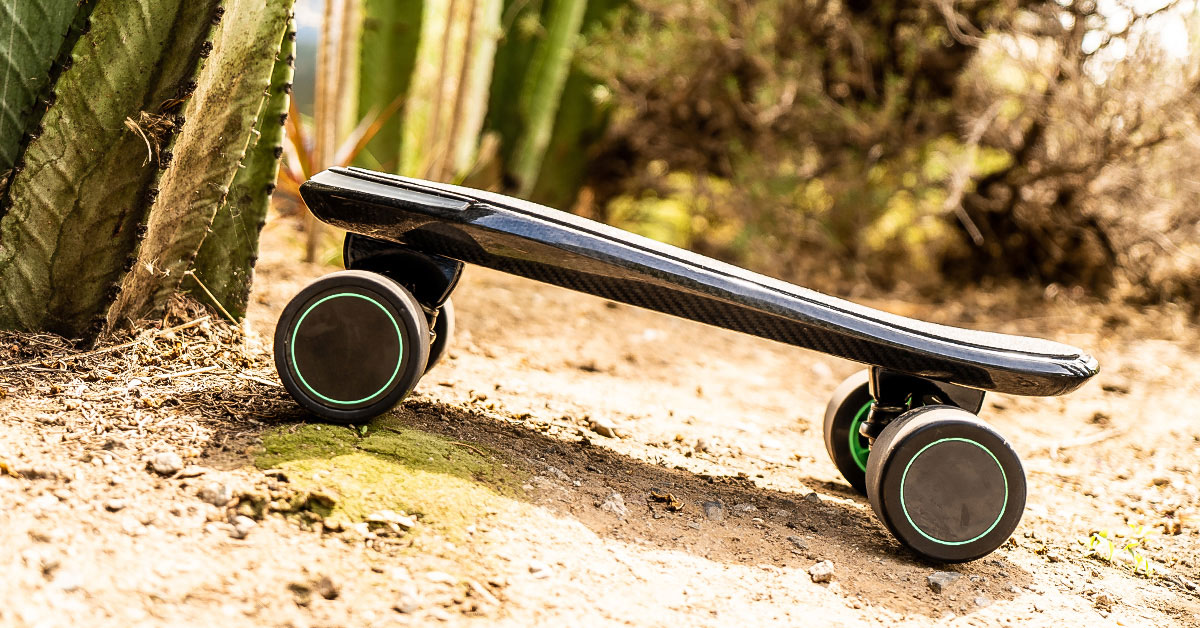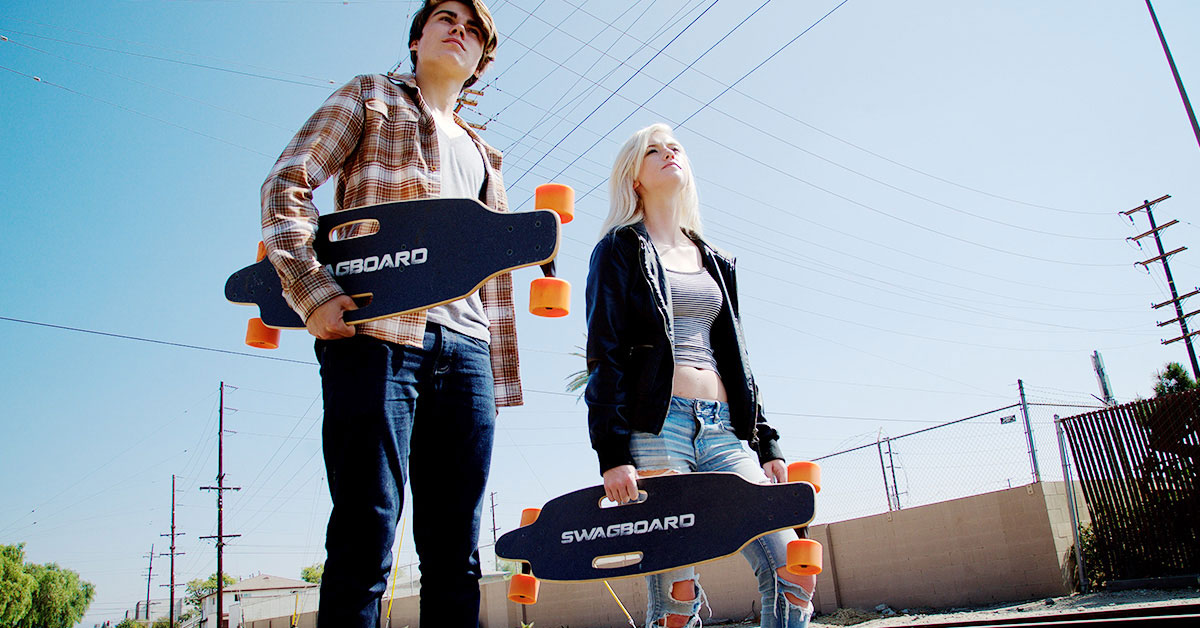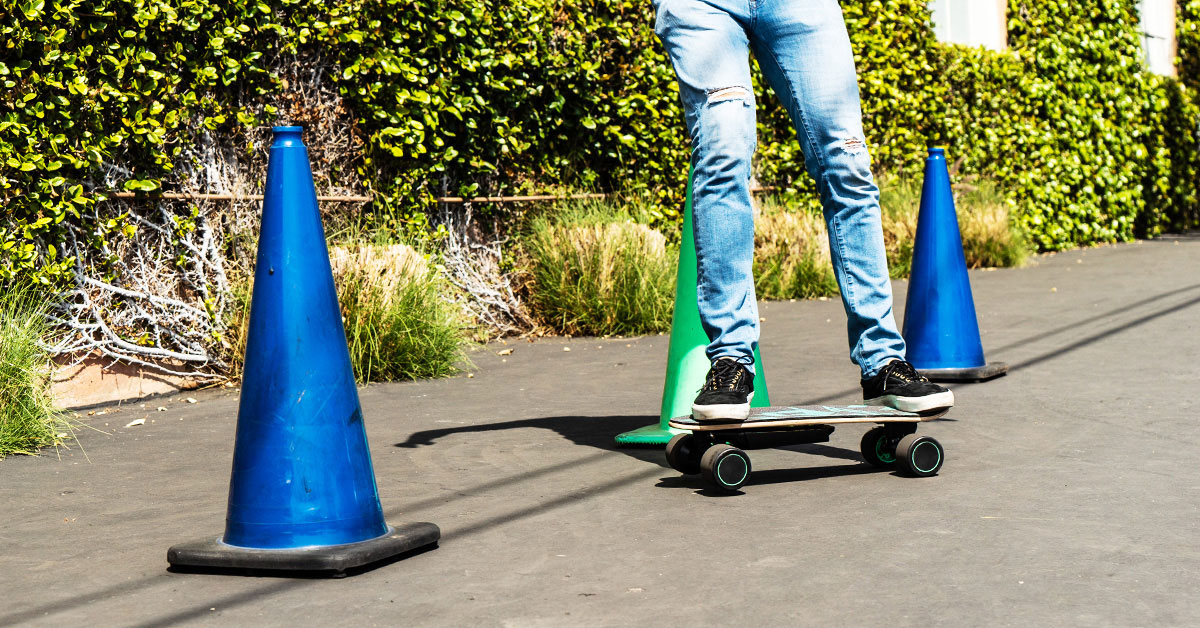
Technology is ever-changing. And nowhere is that more evident than with consumer electronics. Several years ago, no one would have thought an electric skateboard could – or would – exist. But today, it is not only a thought, it’s a reality.
An electric skateboard is basically skateboard with a battery and electric motor. People are looking for new, efficient ways to get around. Either to explore their neighborhood, commute to-and-from school or work, or show off to their friends. And the electric skateboard has become one of the more attractive options available.
Like the electric bike, an e-board looks nearly identical to its non-powered counterpart. You’re riding an electric skateboard and it doesn’t look like it’s some newfangled oddity. It just looks like you’re riding a skateboard.
That’s all well and good if you’re just riding on even, level pavement. What about those hilly sidewalks or campuses? With a traditional skateboard, you can just kick harder to conquer those steep inclines. What about an electric skateboard? Can they also go uphill?
In short, yes, electric skateboards can go uphill.
But there’s always a “but” . . .
The Underlying Factors
In theory, electric skateboards can go uphill. The reality of it might be quite different, depending on a few factors. How steep is the incline? How powerful is the e-board’s motor? How much does the rider weigh?
Let’s dive in!
The Incline (or Gradient)
The most important factor for you to consider when you travel up a hill is the hill’s incline, or gradient. The incline of a road or sidewalk is measured in either degrees or percentage. Without boring you with geometry, 10% grade equals about 5.7 degrees.
Even budget electric skateboards can at least be able to climb a 5% incline. For the average rider, you’ll want to find an electric skateboard that can at least climb 10-15% inclines. That shouldn’t be too hard.

But if you weigh 250 pounds and you’re trying to ride around those steep and windy Asheville, North Carolina, hills? You might need something with a bit more oomph! Which leads us to the next important factor:
The Motor Power
The higher the motor power, the better chance your electric skateboard will be able to tackle those steep hills. As you would expect, electric skateboards are built in a wide variety of power levels, measured in watts. Most low-end e-boards feature at least a 100-watt motor. You’ll need to stick with flat, even sidewalks with those boards!
Premium electric skateboards can have motors powered anywhere between 350-500 watts, but the average rider will be more than fine with a motor ranging from 150 watts to 350 watts.
The Battery Capacity
The electric skateboard needs a lot of power, as we have stated earlier. This means that it needs a high battery capacity. When going up a steep (about 20% gradient) the battery will drain quicker. Therefore, it is crucial for you to conserve your battery capacity with different riding techniques, so that you can have enough capacity to go uphill.
The Torque
To go uphill, the torque of the electric skateboard must be properly calibrated to handle the board. Manufactures spend a lot of time balancing the ratios between power, speed and torque. Nearly every component of the electric skateboard can affect the amount torque transferred to the wheels. This can, in turn, affect the climbing ability of an electric skateboard.
For instance, larger wheels might help the e-board go faster. But that lowers the amount of torque applied to the wheels, making an uphill climb a bit harder for the board.
This is important for people building DiY electric skateboards. But it’s good knowledge even if you plan on buying yours outright.
Rider Weight
Just as with electric bikes, the weight of a rider is crucial when going uphill with electric skateboards. The higher your weight, the more power you will need to go uphill. A rider with a weight of 70 kg can go uphill easily using a normal electric skateboard. For riders that weigh more than 80 kg, the premium motor type will perform better.
Riding Downhill
What goes up, must come down. And you will certainly need to come down a hill at some point in your adventures. It’s easy to lose track of speed when going downhill, so you should definitely be more careful.
If you know you’ll be riding in hilly areas, make sure you find an electric skateboard with some sort of braking mechanism. That can be either be through regenerative braking, dynamic brakes, through a remote, or an anti-lock, electromagnetic disc brake system (MagBrake).

Riding Uphill with an Electric Skateboard
Well, now you know that electric skateboards can go uphill. You also know the factors that go into determining how well your e-board will go uphill. Now that you understand these mitigating factors, you should have no problem determining whether your current electric skateboard can go uphill — or buying the perfect board that does.
Now all you need to do is grab your electric skateboard, point it uphill, and ride beyond!